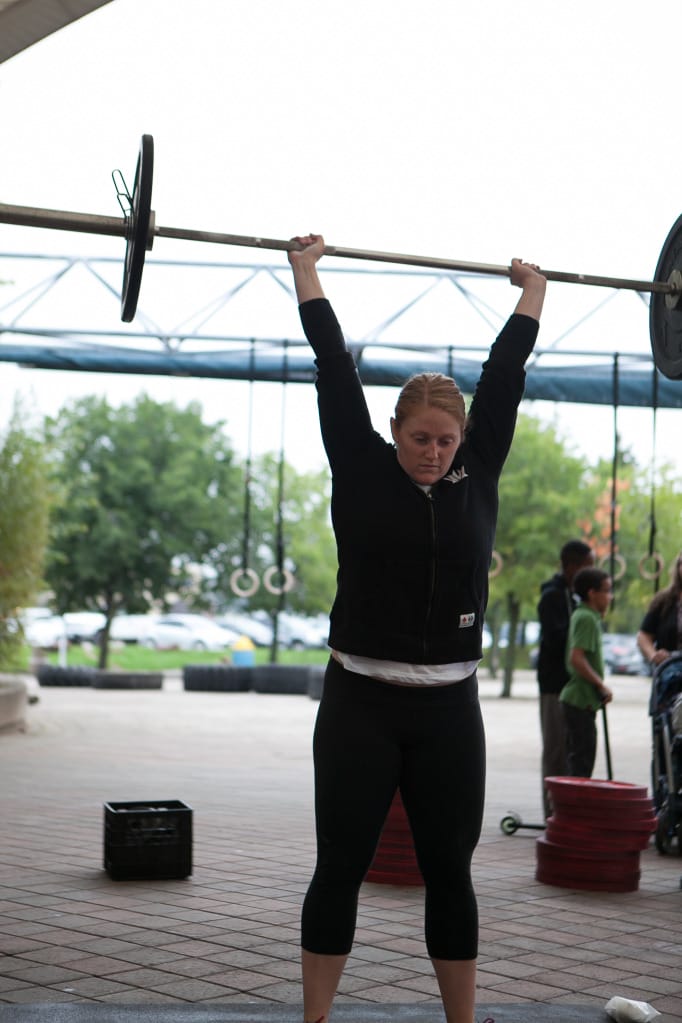“Angie”
100 Pullups
100 Pushups
100 Situps
100 Squats
…for time.
Scale: break up any way you want. Rx: complete one movement before moving on to another.
Why 100 squats after all those jumps and wall balls yesterday? These are different.
Yesterday’s workout was only elegantly written to a biomechanics geek like me. The wall balls feature a good mixed squat in the beginning, but bad catches (too high, or too far out in front) want to pull you forward onto your toes, fatiguing the quads more toward the end. Box jumps are really a quarter squat with a lot of help from your arms, but the eccentric force of landing on the ground can create a ton of fatigue. I saw most people doing step-downs yesterday, which was fine in the context of a long workout with high reps. Either way, the box jump requires a lot of force generated at the knee. The kettlebell swing, by contrast, requires almost all force to come from the hip.
Efficient movement through practice will help your body differentiate these movements-mixed hip/knee, knee dominant, hip dominant-and let you recover a little while working. Reciprocal disinhibition occurs when a muscle on one side of a joint shuts off completely to allow the muscle on the other side to do work unimpeded. For instance, if you were doing a hamstring curl on an isolation machine, your quads have to shut off so that you’re not ‘riding the brake’ while pushing the gas pedal. When you become efficient at kettlebell swings, and your hamstrings/glutes take most of the load, your quads can enter a recovery mode because they’re forced to shut down.
Conversely, when you’re new to these movements, you over-recruit muscle fibre. Your peripheral nervous system isn’t sure how to get the work done efficiently and with minimal effort, so it brings all its buddies to move one box. That means your quads are more engaged during a kettlebell swing, and you ‘ride the brakes’ all the way down in your squats. That eccentric force creates a lot of micro tearing, and the DOMS that results is pretty rough. Enjoy that.
“Angie” requires a full squat and an empty head. Decide on your math in advance, and then focus on moving well. For example, most people will be able to do the pushups, situps and squats in the same time required for the pull-ups. If you get off the pullup bar in 9 minutes, shoot for 18 minutes total. Then focus on your movement: how was that last rep? Can you do it better? If you did it well, tell yourself so, and try to string three good ones together, then five. Don’t focus on how many are left.
Skip to content
Fill out the form below to get started
Take the first step towards getting the results that you want!

